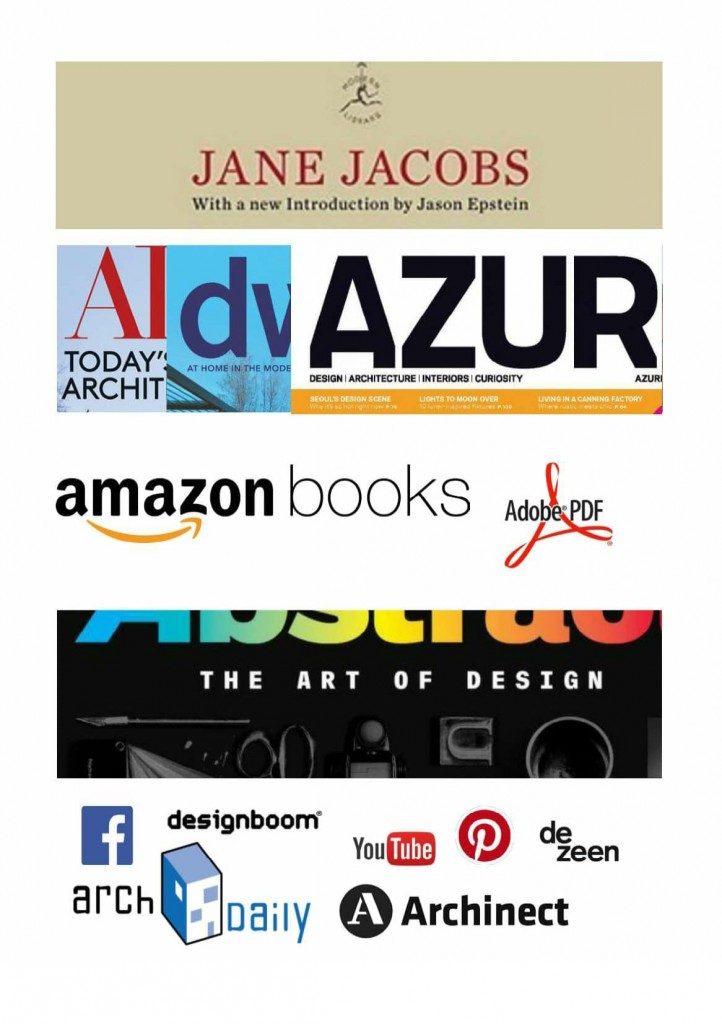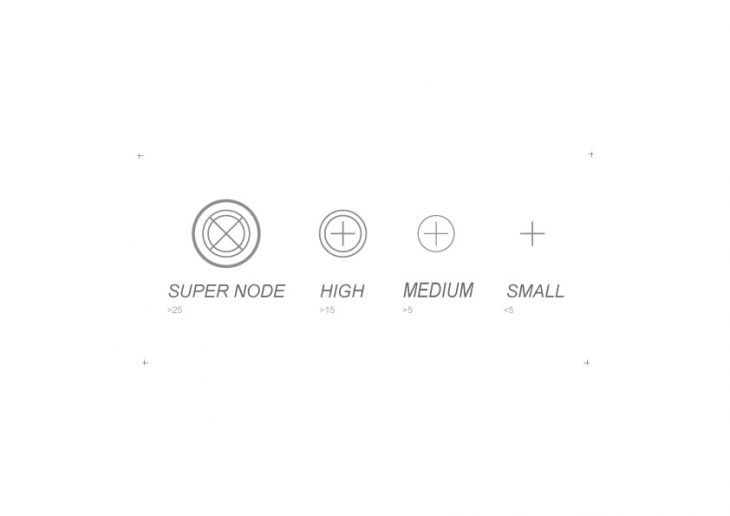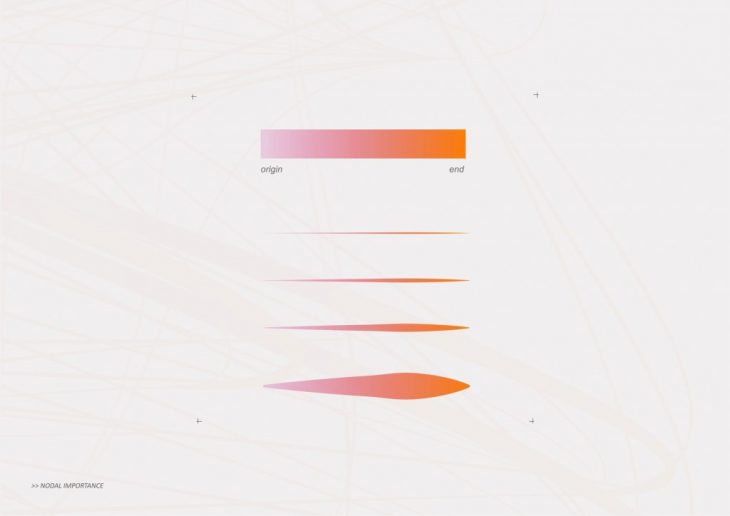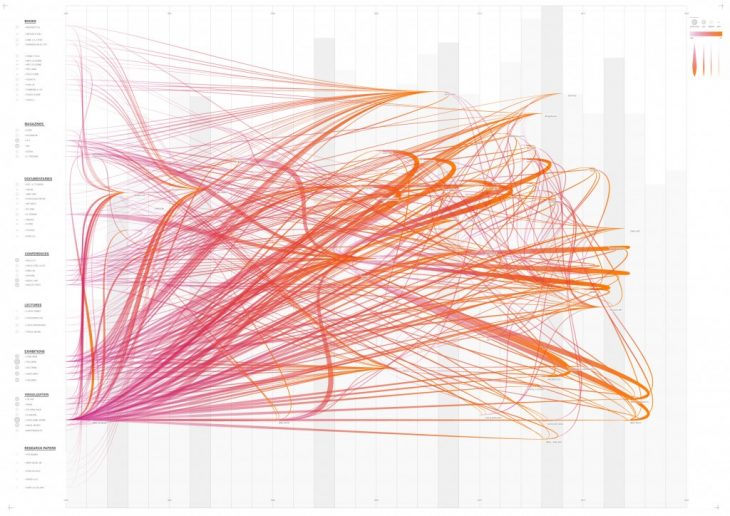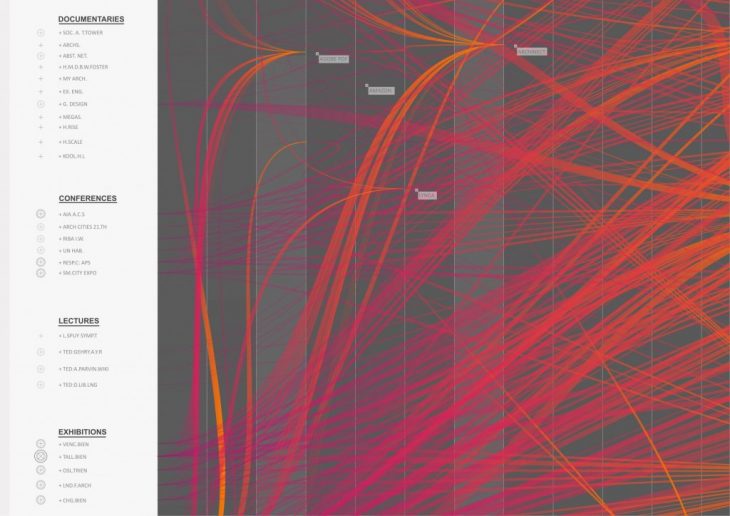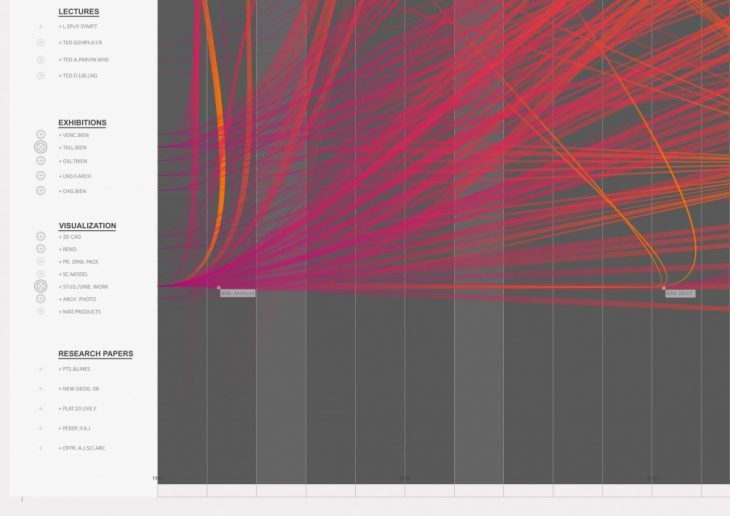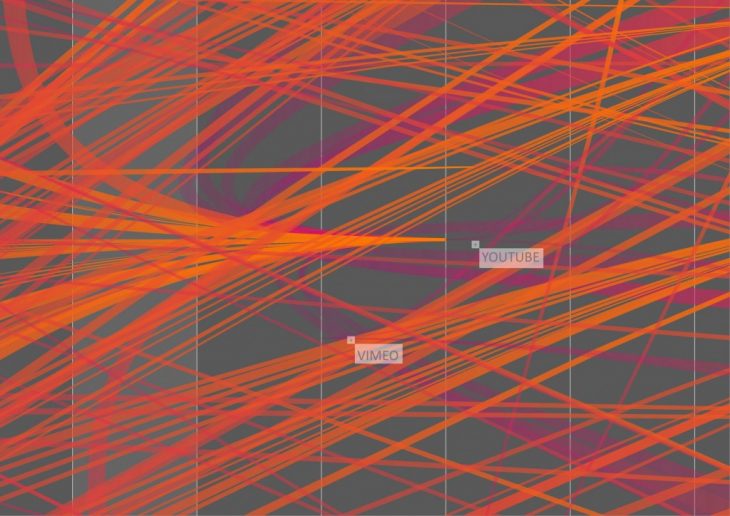SO.2 – THEORY: Architectural Communication
[Definition]
Advanced Architecture is invested in opening dialogues with other disciplines, examining tools and initiating processes. In light of this, process of communication is understood as something non-linear, looping between parts and revisiting stages of design while altering its mode of translation.
[Categories]
In terms of architectural communication we used to rely on singular mediums. Namely, these traditional mediums were:
- BOOKS;
- MAGAZINES;
- DOCUMENTARIES;
- LECTURES;
- CONFERENCES;
- EXHIBITIONS;
- VISUALIZATION;
- RESEARCH PAPERS.
However, now we have an extensive network of social platforms that instantly connects you:
- SOCIAL MEDIA;
- E-BOOKS;
- TUTORIALS;
- PUBLISHER PLATFORMS;
- OPEN DATA;
- VISUALITZATION;
- BLOGS.
[Timefield]
1990s – 2020s
Our timefield investigates the flow of communication and the importance of the architectural media (how often it is shared), this then allow us to read which platforms are most active.
If a media is published on more than 15 platforms, is is consider notable and well connected. Further more, when the number of connections reaches beyond 25, it is what we call a ‘super node’, typically responsible for trending topics and governing the architectural discourse.
[Overview]
Media is all around us today with new information technology constantly breaking new ground and evolving. Although this also affect how we receive architectural information, it is perhaps not something that has been fully explored yet. It should be. By setting up this model we can start to get a sense of which forces that are influencing the architectural discourse right now. For instance, books, conferences and lectures might be seen as static and limited format – to obtain valid and critical information you had to show up at a specific physical location. Instead, nowadays media is shared all around, streamed on Facebook or summarized in a pdf, distributed to thousands of people in a cloud. This has great potential. E-books for example, has the potential of connecting students to the important work by Jane Jacobs.
Thus, platforms such as Archdaily, Youtube and Designboom are cleverly integrated into social media and effectively reaching out to the millennials. Obviously, there is a big discussion here about the credibility of the shared information. Conversely, this everyday exposure to social media mixed with architectural topics blurs the two and creates a new meta which influences the way architecture is perceived. Perhaps especially influencing students and the way they communicate architecture today through Pinterest.
Indeed, we hardly have time time to do more than skim through the images of a project that we see on the web, instantly forming an opinion purely based on composition and visual communication. Overall, this creates a new attitude within architecture and as more architecture is produced and shared, the discourse will keep growing. We will have more platforms are appearing, focusing on smaller topics, interlinking or bridging the gaps between bigger established media.
[About]
SO.2 Theory: Advanced Architectural Concepts // Advanced communication is a project developed in IAAC, Institute for Advanced Architecture of Catalonia
Conducted at Master in Advanced Architecture in 2017 by:
Student: Daniil Koshelyuk, Hari Krishna, Lars Erik Elseth
Faculty: Manuel Gausa, Maite Bravo, Professor, Jordi Vivaldi, Mohamad Elatab, Firas Safieddine
